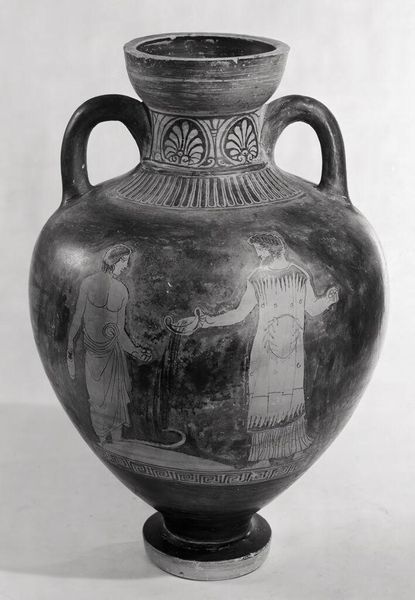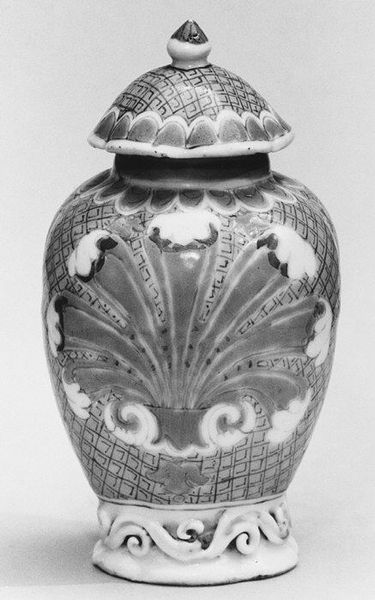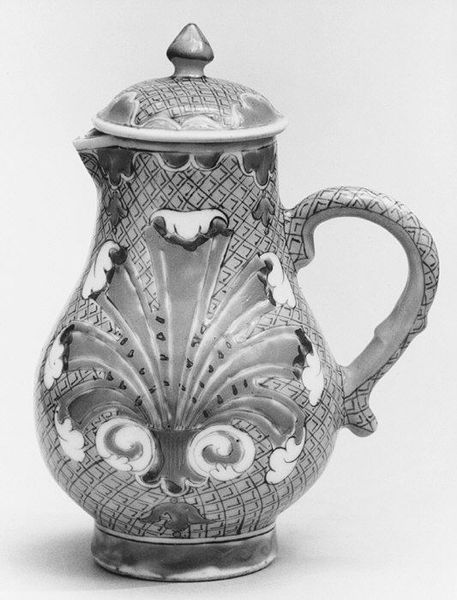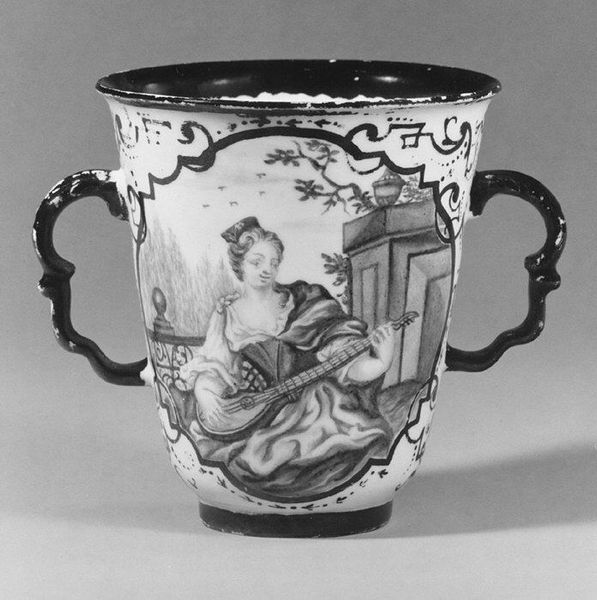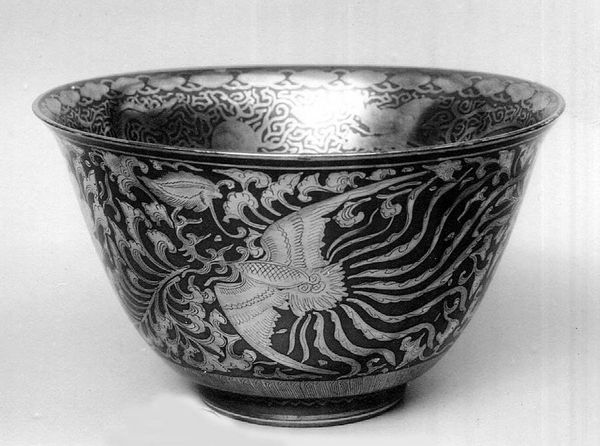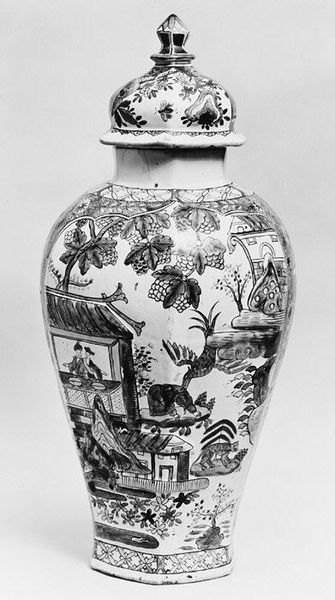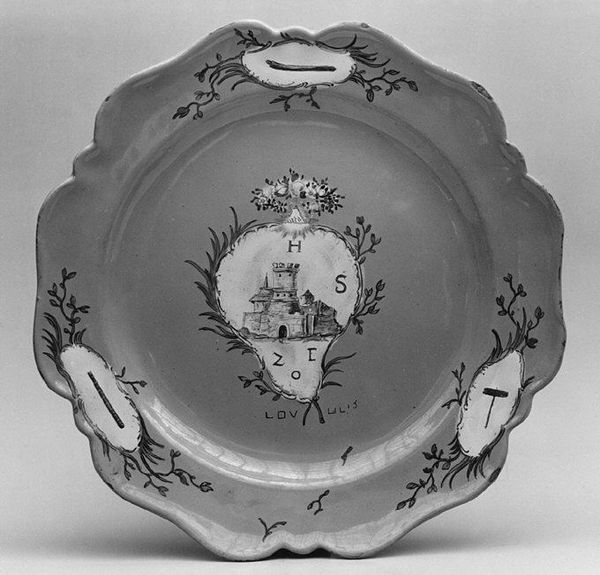
painting, ceramic
#
portrait
#
animal
#
painting
#
greek-and-roman-art
#
ceramic
#
vase
#
black and white format
#
figuration
#
geometric
#
ancient-mediterranean
#
black and white
#
monochrome
#
monochrome
Dimensions: Diameter: 8 1/16 × 3 3/16 in. (20.5 × 8.1 cm) Height: 3 1/2 in. (8.9 cm) Width: 10 5/8 in. (27 cm)
Copyright: Public Domain
Curator: Standing before us is a Kylix, also known as an eye-cup, dating back to 540 BC, which you can find at the Metropolitan Museum of Art. Editor: Immediately striking are the stylized figures – there's a stark beauty in the monochrome. It makes me think about ritual and practicality coexisting. Curator: Indeed. These ceramic drinking vessels were fundamental to symposia, the drinking parties central to elite male social life in ancient Greece. We can read the imagery not only as decorative but intrinsically linked to these performative spaces of identity formation. Editor: When looking at these symposia and their place within a society structured on exploitation, enslavement, and control, I’m compelled to understand its materiality, from clay extraction to the techniques of potting and painting—each step of its creation, marked by specific labor, which reflects larger social and economic structures. Curator: I agree that such a consideration offers a fuller understanding of context, but let us look closely at the decorative schema here. We see large eyes painted on the exterior of the cup. It suggests an embodiment of vigilance, as if the cup itself watches over the drinker, or perhaps wards off evil. Editor: The eyes draw attention. Considering the processes to form this image, there must have been different ceramic workshops at this time with artisans using varied kiln techniques for that stunning black gloss. The decoration almost masks the materiality. Curator: Yes, although such specialization still catered to a very specific segment of the ancient population—land-owning men, that is—a population whose status and identity was shaped by practices like the symposium. So this object is an intersection: of artistry, certainly, but also power, gender, and exclusion. Editor: So, the cup presents multiple points for consideration. The clay extraction, potting methods and artistic decoration serve specific rituals, that, again, take their context in asymmetrical structures and norms. It’s like a layered, embodied archive. Curator: It really is. Examining a piece like this Kylix pushes us beyond a mere aesthetic appreciation and compels us to address ancient Greece's social dynamics as captured within this deceptively simple drinking vessel. Editor: Looking closely helps us rethink value, production, and cultural purpose through its life cycle, so that its function in ancient ritual informs its value as a symbol of human labor, and power.
Comments
No comments
Be the first to comment and join the conversation on the ultimate creative platform.
